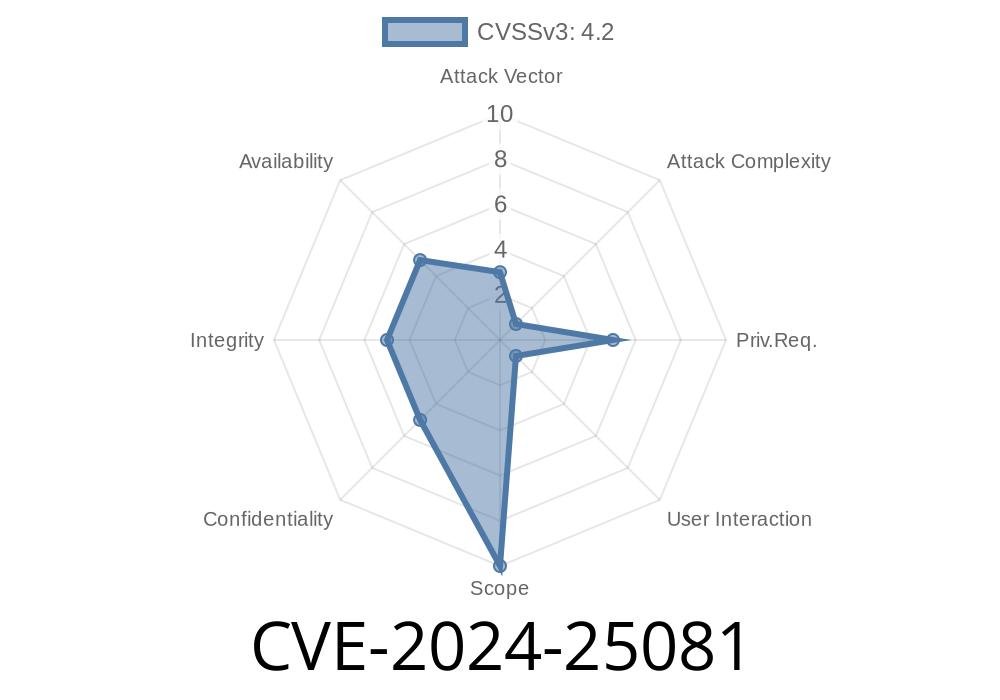Introduction: A recent vulnerability, dubbed CVE-2024-25081, has been discovered in the Splinefont functionality in FontForge, which allows for command injection through specially crafted filenames. This long read post will walk you through the details of the vulnerability, the exploit details, and references to help you understand and address the issue.
Splinefont Vulnerability
Splinefont is a crucial part of FontForge, a free and open-source font editor that is widely used to create and modify font types. This vulnerability has been specifically found in FontForge, affecting all versions up to and including 20230101. The issue allows attackers to execute arbitrary commands on the victim's system by creating a specially crafted filename that contains malicious code. This can lead to a wide range of security threats, such as a compromise of the user's system and unauthorized access to sensitive information.
The following code snippet is an example of how this vulnerability can be exploited
fontforge -lang=ff -c 'Open($1);Generate($2)' ';echo vulnerable > /tmp/touch.txt;' out.ttf
In this example, the command injection occurs through the input parameter $1, which contains the malicious string ;echo vulnerable > /tmp/touch.txt;. When the user attempts to create or modify a font using FontForge, the malicious command is executed on their system as well, creating a file named touch.txt in the /tmp directory with the contents "vulnerable."
Exploit Details
The vulnerability relies on the fact that FontForge does not properly sanitize input filenames before executing system commands. As a result, carefully crafted filenames can inject malicious code that is executed alongside normal FontForge operations.
An attacker would start by creating a font file or modifying an existing file with a malicious filename. The attacker could then distribute this file to unsuspecting users through various methods, such as email attachments, file-sharing platforms, or social engineering tactics. Once a user opens the malicious file with FontForge, the embedded code would be executed on their system, leading to a potential compromise.
Original References
- Official FontForge Repository
- Official FontForge Documentation
- CVE-2024-25081: FontForge Splinefont Command Injection Vulnerability
- NVD - CVE-2024-25081
Mitigation
The safest course of action is to upgrade to the latest version of FontForge. The maintainers have been made aware of the issue, and it is likely that a patch will be released to address the vulnerability. Users should keep their software up-to-date and monitor the FontForge GitHub repository for any updates or patches related to this issue.
Conclusion
CVE-2024-25081 is a significant security threat to all FontForge users. It highlights the importance of proper input sanitization and validation when handling user-supplied data. By understanding this vulnerability and its exploit methods, users can take the necessary precautions to protect their systems from potential attacks. Stay vigilant and ensure that your software is updated regularly to protect against the latest security threats.
Timeline
Published on: 02/26/2024 16:27:58 UTC
Last modified on: 08/27/2024 19:35:13 UTC
